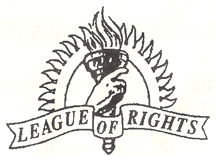Why are Boys More Right Wing than Girls? By Mrs. Vera West
The article from The Daily Sceptic, published on February 26, 2025, titled "Why Are Boys So Much More Right-Wing Than Girls?" explores the growing political gender divide among young people in Western countries, with a particular focus on a Norwegian study that attributes this divergence largely to differing attitudes toward gender equality.
The Daily Sceptic piece highlights a significant trend: young men are increasingly aligning with Right-wing ideologies, while young women are shifting toward the Left. It cites a Financial Times analysis by John Burn-Murdoch, who tracked this divergence in four Western nations—Germany, Britain, the U.S., and another unspecified country—since the early 2010s. In Germany, the U.S., and the unspecified nation, young men have grown more conservative, while young women have become more liberal. In Britain, both genders have trended liberal, but the shift is far more pronounced among women, with a nearly 40-point increase in liberal identification since 2010. The article then zeroes in on a Norwegian study by Ruben Mathisen, based on the Norwegian School Elections Survey, which involves mock elections and surveys of high school students (sample size ~130,000). Since the early 2000s, the gender gap in Left-Right voting among Norwegian teens has widened by over 20 points, with boys now 45 points more likely to support right-wing parties than girls. Notably, this gap is absent among adults, suggesting a generational phenomenon.
Mathisen's study pinpointed the key driver: attitudes toward gender equality. Norwegian boys have increasingly endorsed the view that "gender equality has gone too far," while their opinions on other issues like immigration and the economy have remained stable. Girls, conversely, have not shown a similar shift, maintaining or strengthening support for gender equality and left-leaning parties. The Daily Sceptic frames this as evidence that the gender divide stems from reactions to gender-specific issues, possibly spurred by movements like #MeToo and its backlash, rather than a broad ideological shift across all topics.
A 2023 article from The Economist, analysing global voting trends, confirms a similar gender divide in countries like the U.S., South Korea, and Poland, noting that Gen Z men (born 1997–2012) are more likely to back conservative figures like Donald Trump or South Korea's People Power Party, while women favor progressive candidates. In the U.S., a 2024 Gallup poll found 51 percent of men aged 18–29 identifying as conservative versus 36 percent of women, a gap that's doubled since 2010. The Economist suggests multiple factors: economic stagnation disproportionately affecting young men's job prospects, the rise of online right-wing influencers targeting male audiences (e.g., Andrew Tate), and a backlash against progressive social policies perceived as favouring women.
A 2024 Pew Research Center report adds depth, highlighting that young men are more likely to feel "left behind" by societal changes—44 percent of U.S. men aged 18–24 agreed that "men's traditional roles are undervalued" in a 2023 survey, compared to 28 percent of women. This sentiment correlates with support for Right-wing parties emphasising traditional gender norms. Meanwhile, young women's leftward shift aligns with increased education (women now outnumber men in U.S. colleges 60-40, per the National Center for Education Statistics) and exposure to feminist discourse, amplified by social media platforms like TikTok, where progressive activism dominates among female users.
The Norwegian findings resonate elsewhere. A 2025 Guardian piece on British youth politics notes that while both genders lean left due to economic discontent (e.g., housing costs), young men are more drawn to Reform UK's anti-immigration stance, while women support Labour's social equity focus. A Substack post by sociologist Musa al-Gharbi (February 2025) argues that the #MeToo movement and subsequent cultural shifts have alienated some young men, who perceive feminism as punitive rather than egalitarian, pushing them toward conservative voices promising to "restore balance."
Critically, the data isn't uniform. In France, a 2024 Le Monde analysis found young men and women both trending rightward, driven by immigration concerns rather than gender issues, suggesting cultural context matters. Still, the Norwegian study's focus on gender equality as the linchpin holds weight in many Western contexts, supported by X posts from researchers like Eric Kaufmann, who in February 2025 tweeted: "Young men rejecting egalitarianism isn't about economics—it's cultural resentment of perceived female advantage."
In sum, the Daily Sceptic article accurately identifies a widening gender-political divide among youth, with the Norwegian study offering a compelling lens: boys' growing scepticism of gender equality drives their rightward turn, while girls' support for it anchors their leftism. Other sources reinforce this with economic, cultural, and technological factors—job loss, online radicalisation, and progressive education—while highlighting exceptions where different issues dominate. The trend is real, not fabricated, and reflects a complex interplay of identity and ideology reshaping politics.
https://dailysceptic.org/2025/02/26/why-are-boys-so-much-more-right-wing-than-girls/


Comments